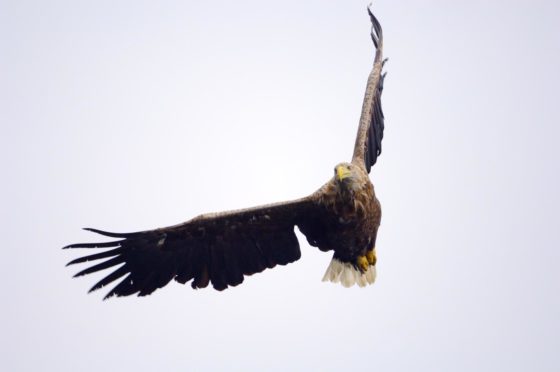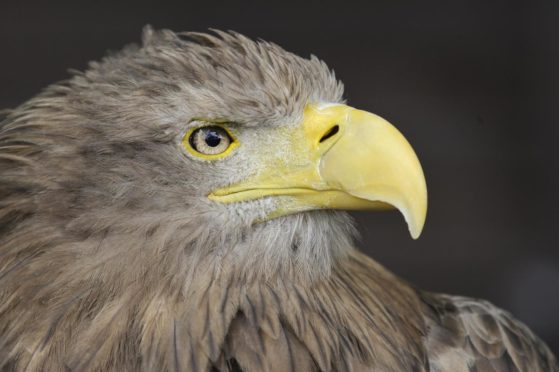Sea eagles have appeared on Loch Lomond for the first time in more than a century.
A pair of white-tailed eagles, commonly known as sea eagles, were first spotted at Loch Lomond National Nature Reserve in early March this year.
They have since been observed “nest prospecting” – searching for suitable nest sites – suggesting they intend to stay.
A pair of white-tailed eagles, or sea eagles as they’re commonly known, were first spotted at Loch Lomond National Nature Reserve in early March this year.
They have since been observed ‘nest prospecting’ – searching for suitable nest sites – suggesting they intend to stay.
It is believed that this is the first time sea eagles have settled at Loch Lomond since persecution and habitat changes led to their extinction in Britain in the early 20th century, with the last known bird reported in Shetland in 1918.
Their reintroduction to Scotland, first in the 1970s and again in the 90s and early 2000s, has been a conservation success.
There is now estimated to be more than 150 breeding pairs.
NatureScot, Loch Lomond and Trossachs National Park Authority and RSPB Scotland are working together to monitor the birds’ behaviour, and to put in place protection and visitor management measures to ensure the birds are not disturbed by other loch users.
This includes an exclusion zone, signs asking visitors to keep their distance and monitoring of the area during regular Ranger patrols.
Police Scotland are also aware of the presence of the sea eagles.
The picture is slowly perfecting
NatureScot operations manager Paul Roberts said: “This is the latest chapter in the continuing success story of sea eagle conservation.
“Along with our partners, we carefully manage the reserve to offer rich and diverse habitats to support a wide range of birds and other wildlife, so it’s very rewarding to see the sea eagles return to Loch Lomond after all these years.
“We’re working closely with LLTNPA and RSPB Scotland to protect the birds and we are urging visitors to enjoy the reserve responsibly and make sure they don’t disturb them.”
Simon Jones, director of environment & visitor services at Loch Lomond & The Trossachs National Park Authority, said: “White Tailed Eagles are the UK’s largest bird of prey and to have them here in the National Park is something we are excited about.
“We all have a responsibility to help keep these special birds safe and try to minimise disturbance to them. We are engaging with a range of stakeholders who may be impacted by the birds’ arrival in the area, including loch users, visitors and local farmers.
“Protecting the natural environment and the wildlife here in the National Park is a priority for the Park Authority and we have plenty of experience of doing this, including our work to protect nesting ospreys, for whom we have put similar protections in place.”
To read up on NatureScot’s action plan for the bird species click here.

